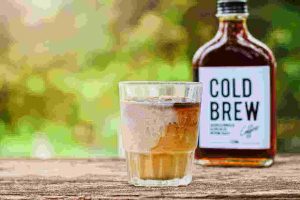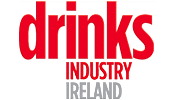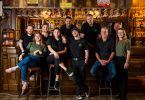RTD volumes to double by 2025

Hard Coffees: alcoholic drinks which can be cold brew or creamy hard coffee.
IWSR defines seven sub-categories of RTD product:
- Cocktails/long drinks: drinks that reflect both well-known cocktails (Mojito, Negroni, Mule, Cosmopolitan) and common mixed drinks containing a base spirit and a non-alcoholic mixer (for example gin and tonic or vodka and soda) where the base alcohol is clearly identified
- Hard Seltzers: composed of a blend of carbonated water and alcohol, in some cases with added fruit flavour and typically malt-based but can also be wine- or spirit-based. In contrast to long drinks, the alcohol is not defined
- Hard Coffees: alcoholic drinks which can be cold brew or creamy hard coffee
- Hard Teas: alcoholic tea drinks
- Hard Kombuchas: made with sweetened black or green tea, fermented and then often blended with natural juice
- Wine spritzers/coolers: drinks which mix wine with carbonated water or sodas, or fruit juices
- Flavored Alcoholic Beverages: covers all other RTDs including the likes of Smirnoff Ice and Bacardi Breezers as well as local brands.
IWSR’s new RTD Strategic Study examines the category across 10 focus markets (Australia, Brazil, Canada, China, Germany, Japan, Mexico, South Africa, the UK and the US) which represent more than 85% of all RTD volumes worldwide.
RTD volumes have been growing faster than any other major drinks category since 2018 and are expected to significantly outperform the wider beverage alcohol market from about 4% market share in 2020 over the following five years, increasing their market share to 8% by 2025 in top RTD markets.
IWSR forecasts a Compound Annual Growth Rate for RTDs of approximately 15% from 2020 to 2025 in these markets compared to about 1% CAGR for total beverage alcohol during this same period.
“RTDs are still growing at higher rates than spirits, wine and beer, signaling a major shift in consumer interest in this category across all demographics,” says Brandy Rand, Chief Operating Officer of the Americas at IWSR, “But it’s important to note that RTDs aren’t only stealing share from beer, they’re also attracting spirits consumers in markets such as Australia and the UK and cider drinkers in South Africa. We’re also seeing a significant premiumisation trend in RTDs as more and more new brands enter the space.”
Among the report’s findings:
Hard Seltzers forecast to remain primary driver of RTD volumes in coming years
IWSR projects that Hard Seltzers will account for half of all global RTD volumes by 2025 (up from 30% in 2020) driven by consumer demand for flavourful drinks with “better-for-you” attributes. Though much of this growth will continue to come from the US, Hard Seltzers are forecast to grow rapidly in other markets too such as Canada (up 50% CAGR 2020-2025), the UK (up 90%), China (up 84%) and Australia (up 24%). Across the 10 focus markets in the study, Hard Seltzers are expected to post total volume growth of 26% CAGR 2020-2025.
“Hard Seltzer volumes outside the US are small but awareness is also low,” says Brandy Rand, “As that awareness grows, we’re seeing that people are increasingly willing to consider trying these products.
“It’s important to remember that it took a few years for Hard Seltzers to catch on in America and we’re still in early days in this category outside the US.”
FABs & cocktails/long drinks drive non-Hard Seltzer RTD growth
In countries such as Brazil, China, Japan and South Africa the RTD market is driven by FABs. This sub-category is forecast to have a 7% CAGR 2020-2025, led by markets such as Japan, the US and China.
The other dominant RTD sub-category is cocktails/long drinks, especially popular in countries such as Australia, Germany, Canada and Mexico. These are projected to have a CAGR of almost 9% 2020-2025. Other rapidly-growing RTD sub-categories include Hard Coffees, Hard Kombuchas and Hard Teas (though from a smaller base).
Flavour is top contributor to Premium image and RTD purchase considerations
IWSR’s consumer research shows that more than half of RTD drinkers (56%) say that the regular release of new RTD flavours is the most important factor in establishing a Premium image, followed by connection to a known brand (the value of brand extensions) and the use of innovative packaging.
Flavour is also the key driver influencing purchase of RTDs, preferred by almost 70% of consumers. IWSR’s research shows that there’s a clear preference among consumers for spirit-based RTDs in most markets as these generally have connotations of superior quality (vodka in particular is highly favoured as a base) ‘though malt-based products are gaining share as well, driven, of course, by the rise of Hard Seltzers.
Diversity and innovation of RTDs offers opportunities for companies across drinks market
RTDs have proven an effective opportunity for companies and brands from across the full spectrum of the drinks market. For example brewers and soft drink companies have found particular opportunities in Hard Seltzers, becoming a major driving force behind that sub-category’s recent growth. Spirits and wine producers too have leveraged their existing brand awareness and equity to move into RTDs, from pre-mixed cocktails to Hard Seltzers to wine spritzes and coolers.
“It’s not just consumers who benefit from interesting and innovative RTD products” adds Brandy Rand, “so too do global drinks companies. More than any other category RTDs have truly captured and leveraged the trend of convergence in the beverage industry.
“Many well-known brands, from water to energy drinks to coffee, have recently crossed over into alcoholic RTDs, leading to a number of strategic partnerships between soft drinks, beer and spirits companies in order to successfully leverage distribution across multiple outlets.”









